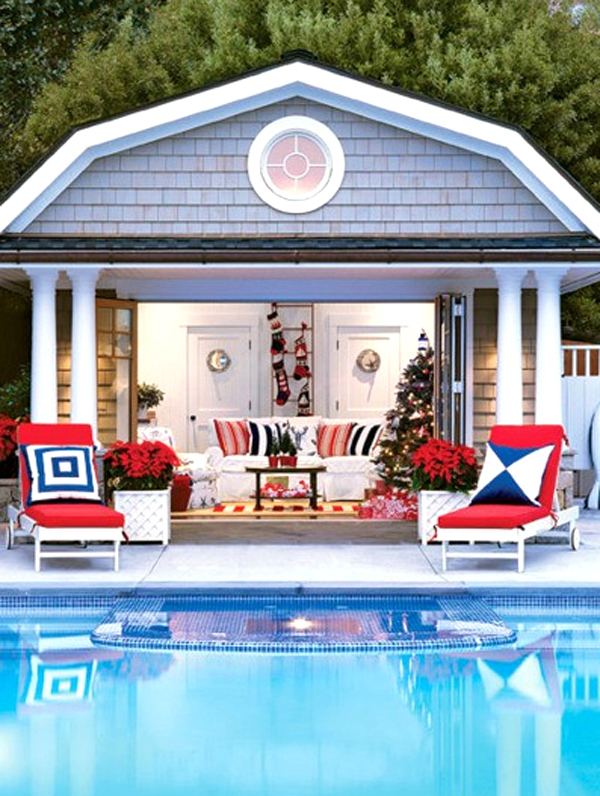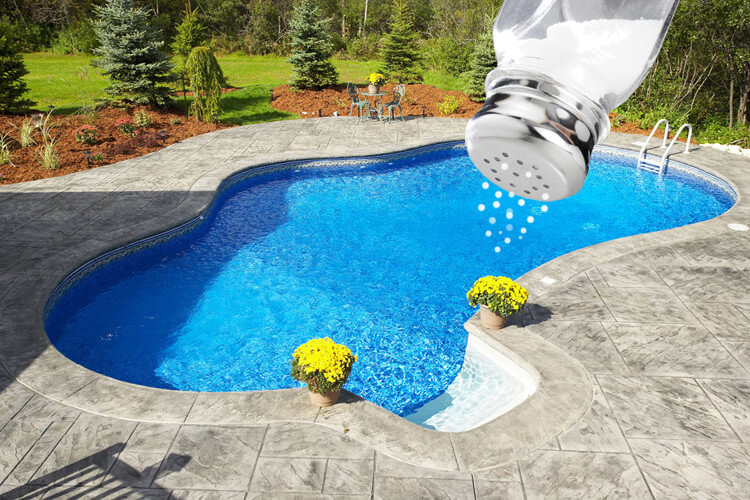Pool Debate

Salt Water Pools: The Pros and Cons

Is There Chlorine in There at All?
Just to make it clear, salt water pools do have chlorine in them, but the chlorine comes from the salt, created by a salt water chlorinator or salt water generator. However, the chlorine levels are much lower compared to a regular chlorinated pool. Because of the lower chlorine levels, salt water pools are less drying to the skin.
Upfront and Long-Term Costs
Salt water pools can be more expensive at the onset because you need to purchase a salt water generator, which produces a steady flow of chlorine, stopping algae buildup and lengthening the life of the pool. (In regular chlorinated pools, chlorine is a direct addition to the water.) In addition to this purchase, the generator needs to run 24 hours a day, 7 days a week, which can add to your electric bill. However, one of the things to keep in mind if you are thinking of a salt water pool is how long you plan on keeping it. The cost of the generator outweighs the cost of chlorine pool chemicals the longer you keep the pool. And, a great plus is that you do not have to constantly add other chemicals to the water to keep it clean, which cuts down on cost.
Other Concerns
Cleaning your salt water pool (other than skimming bugs and leaves) is only required once a year. This process involves draining the pool, changing filters, scrubbing surfaces and inspecting the chlorine generator.
Chlorine Pools: The Pros and Cons

Chemical Requirements
Chlorine pools are much cheaper at the onset than a saltwater pool, but they are somewhat harder to take care of. The pH balance in a chlorine pool is not consistent and will need vigilance to keep it maintained. When you have your pool installed, a maintenance list will come with it. Take a sample of your water to the pool supply store and you are sure to get a list of chemicals needed to keep the water in the pool clean and safe. In order for the chlorine to be effective, there are some other things you have to keep an eye on. The pH should be between 7.2 and 7.6, alkalinity between 100 and 150 parts per million and calcium at 200-300 parts per million.
The Rigmarole of Maintenance
Chlorine pools require constant surveillance whereas salt water pools stay clean with less work because of the constant flow of chlorine from the generator. Every three to four weeks you need to shock your pool to kill any excess bacteria. Make sure to follow the pool supplier's and the shock supplier’s directions. You will need to find out exactly how much chlorine is in the pool to know how much shock to add. It's a balance game.
It's a gross thing to think about, but chlorine mixes with all kinds of human output, including saliva and sweat, which turn into other chemicals called chloramines. Chloramines are responsible for the "chlorine smell" of pools, as well as skin and eye irritation. Even though chlorine kills contaminates, the chloramines stay in the water, requiring additional chlorine to remove them. Salt water pools kill chloramines faster than chlorine pools.
The Roundup
Chlorine pools take commitment while salt water pools take a little more money up front. The technology for a safe, affordable chlorine pool has been around for about 50 years, while salt water pools have been around since the 1980s. More and more hotels and water parks are converting to salt water pools mainly because they are less expensive to keep clean. Those with the money upfront for a salt water pool enjoy their choice because the maintenance is less than chlorine pools. Either way, choose what is best for you and enjoy your personal oasis during the summer heat.
The Blue Lagoons can help you convert your chlorine pool into a salt pool!
stunning! this can be a standout among the most useful on line journals we've got ever run over on thesubject. absolutely exceptional facts! i'm moreover a expert on this challenge so i can comprehend your exertion. swimming pool cleaning charlestonsc
ReplyDelete